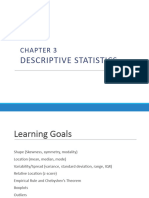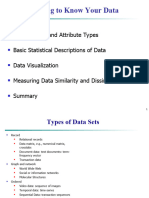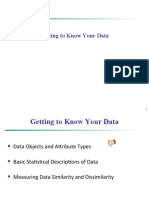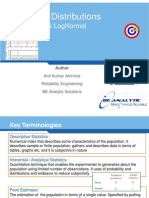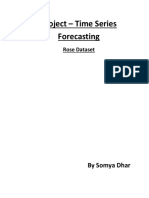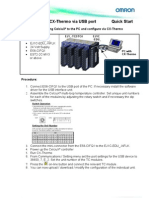0% found this document useful (0 votes)
9 views61 pagesData Exploration
Data mining involves exploring large datasets to identify valid, novel, useful, and understandable patterns. Data exploration is a preliminary analysis aimed at understanding data characteristics, guiding the selection of analysis tools, and leveraging human pattern recognition. Key concepts include types of data, measures of central tendency and variability, the importance of outliers, and the role of visualization in data analysis.
Uploaded by
dumi dlamCopyright
© © All Rights Reserved
We take content rights seriously. If you suspect this is your content, claim it here.
Available Formats
Download as PDF, TXT or read online on Scribd
0% found this document useful (0 votes)
9 views61 pagesData Exploration
Data mining involves exploring large datasets to identify valid, novel, useful, and understandable patterns. Data exploration is a preliminary analysis aimed at understanding data characteristics, guiding the selection of analysis tools, and leveraging human pattern recognition. Key concepts include types of data, measures of central tendency and variability, the importance of outliers, and the role of visualization in data analysis.
Uploaded by
dumi dlamCopyright
© © All Rights Reserved
We take content rights seriously. If you suspect this is your content, claim it here.
Available Formats
Download as PDF, TXT or read online on Scribd
/ 61






